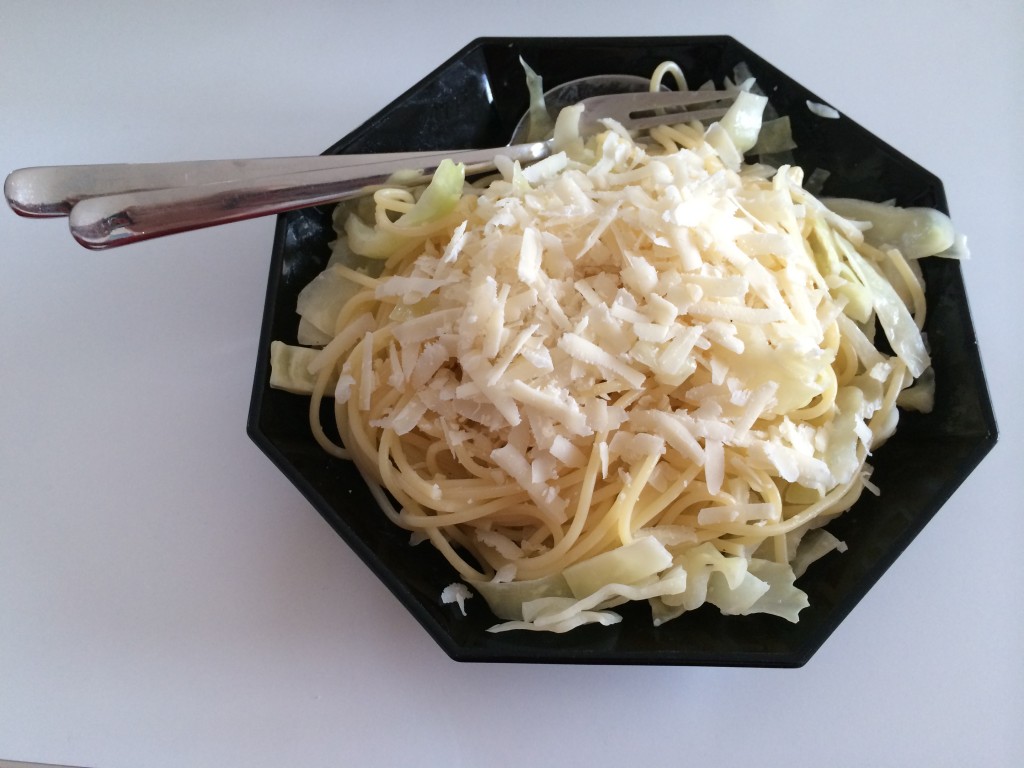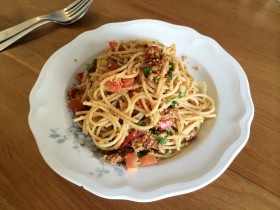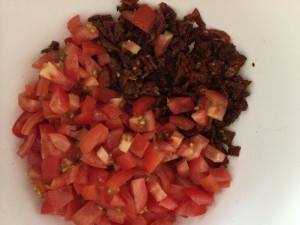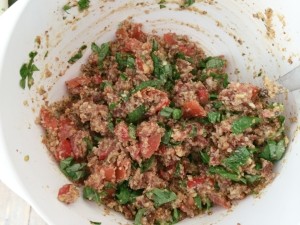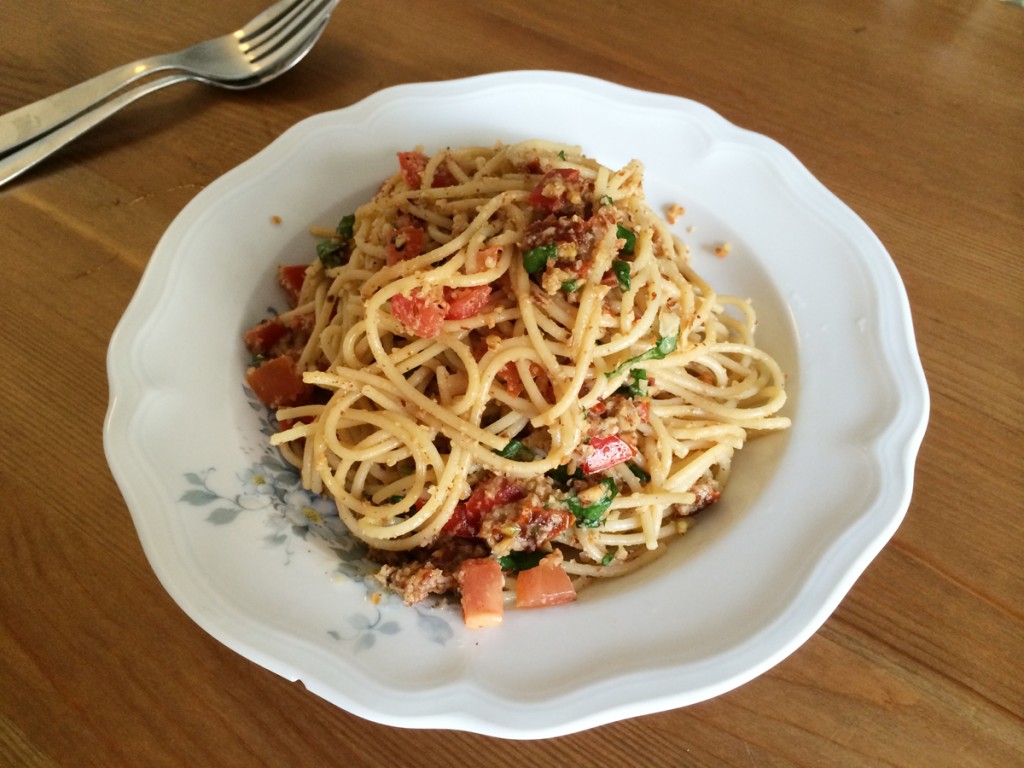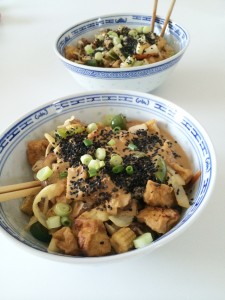 This is real comfort food. You can throw it together in no time, you can use whatever in your fridge looks like growing a pair of legs in a short while and tastes unbelievably good.
This is real comfort food. You can throw it together in no time, you can use whatever in your fridge looks like growing a pair of legs in a short while and tastes unbelievably good.
Usually I end up cooking these noodles on rainy sunday afternoons, when the main goal is to cuddle up on the couch and watch some episodes of my current favorite series.
I start with the sesame-peanut-sauce. In this recipe I use the US cup measurement, but don’t worry if you don’t have cups, I also added the quantities in ml.
Ingredients sesame-peanut-sauce
- 3 Tbsp tahin
- 2 Tbsp soy sauce
- 3/4 Tbsp fresh ginger (size of a thumb)
- 1 1/2 tsp chili paste
- 1 Tbsp sugar
- 2 Tbsp peanut butter or roasted peanuts
- 1/4 – 1/2 cups hot water (60-120ml)
- 2 spring onions, cut in rings (optional)
Put everything in a small food processor or blender, except for the water, and whiz until it forms a coarse paste. Now start with adding 1/4 cup of water, whiz again. If you think it’s still to thick, add more water. You want a creamy, but not to runny sauce.
Now it’s time to start with the noodles and vegetables.
You can use alsmost anything you like. I usually choose, what needs to be eaten fast, before turning bad. You can cook it with any kinds of green beans, like Edamame, sugar snaps, runner beans and also peas. But also Sweet potato, celerie and mushrooms. For the protein you can substitute the tofu with seitan or tempeh or leave it completely. You see, it’s very versatile this recipe, and you can always use less different vegetables. Just check your fridge and use what’s there.
Ingredients vegetables & noodles
- 200-250g japanese somen noodles (you can use any kind of asian noodles)
- 1 green or red pepper, cut into 1 cm pieces
- 1 small carrot, julienned
- 6 mini-corn cobs, cut in ca. 1 cm pieces
- 5 medium button mushrooms, cut in 6 wedges
- 1 cup china oder white cabbage, cut in 1 cm
- 1 cup fried tofu, in 1 cm pieces if using a big block, or those little fried pieces
- 1/2 cup ponzu-sauce (120ml) (optional)
- 1 Tbsp sesame oil, roasted
- 1 Tbsp neutral oil, for example peanut oil
- 1–2 Tbsp sesame seeds, toasted
- 1–2 spring onions, green and white parts cut in small rings
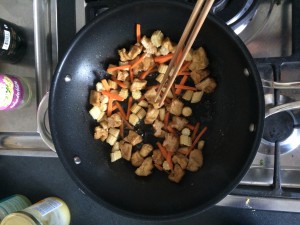
Roast the sesame in a thick-bottomed pan without oil on small to medium heat until the seeds start to pop. Put aside until you need it.
Now I usually heat a big pot of water, to cook the noodles in, but before that, I cook the tofu in it for 1–2 min, to get rid of the oily film on the surface.
You don’t need to do that. Now cut the tofu in 1 cm blocks if you have those little fried tofu pieces. Mariante the tofu in the ponzu sauce until everything else is ready to use. I keep the cooking water to cook the noodles in it.
Fry the vegetables in 1–2 Tbsp oil according to the time they need to soften. Start with the carrots, after 2 min, add the baby corn and the pepper. Now remove the tofu from the ponzu sauce, keeping the sauce, and add the tofu together with the mushrooms.
Depending on the noodles you use, you want to cook them now. Of course according to packet instructions. When done, rinse with cold water, to get rid of all the starch.
To finish everything, add the cabbage and the ponzu sauce, mix everything and let the cabbage wilt a little bit.
Now everything ist ready. I usually add the noodles, and mix them with the vegetables, before dividing between to big bowls. Spoon the sesame peanut sauce on top, sprinkle the toasted sesame and the spring onions over everything. That’s it.
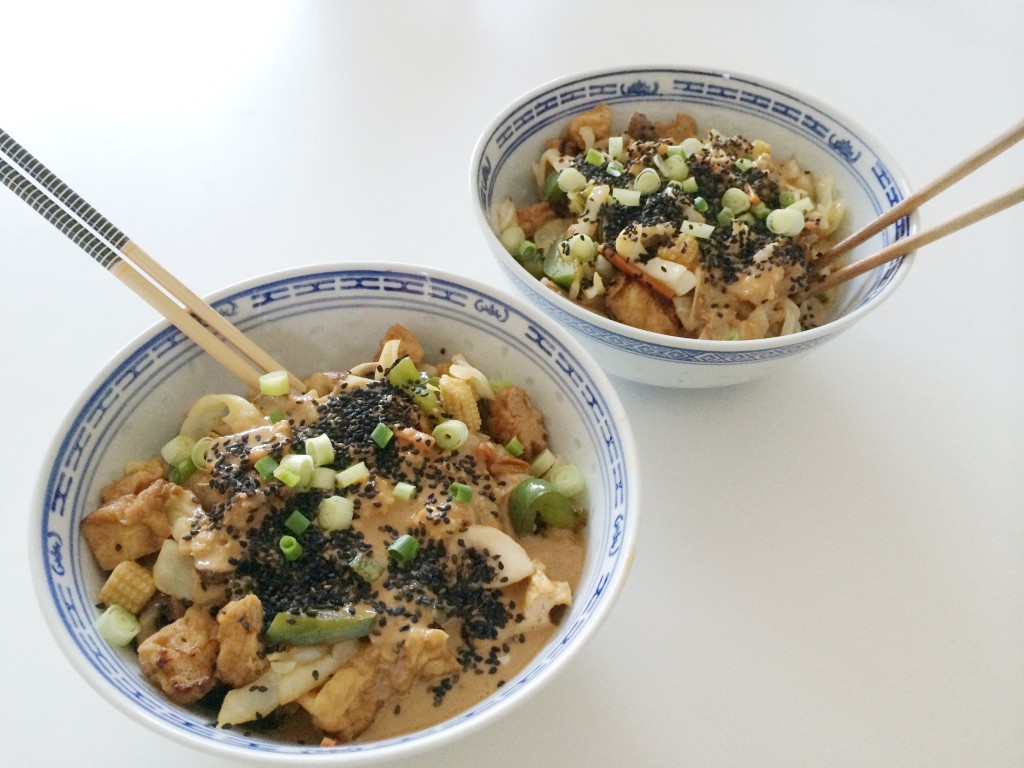
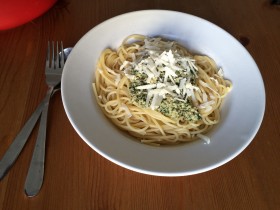
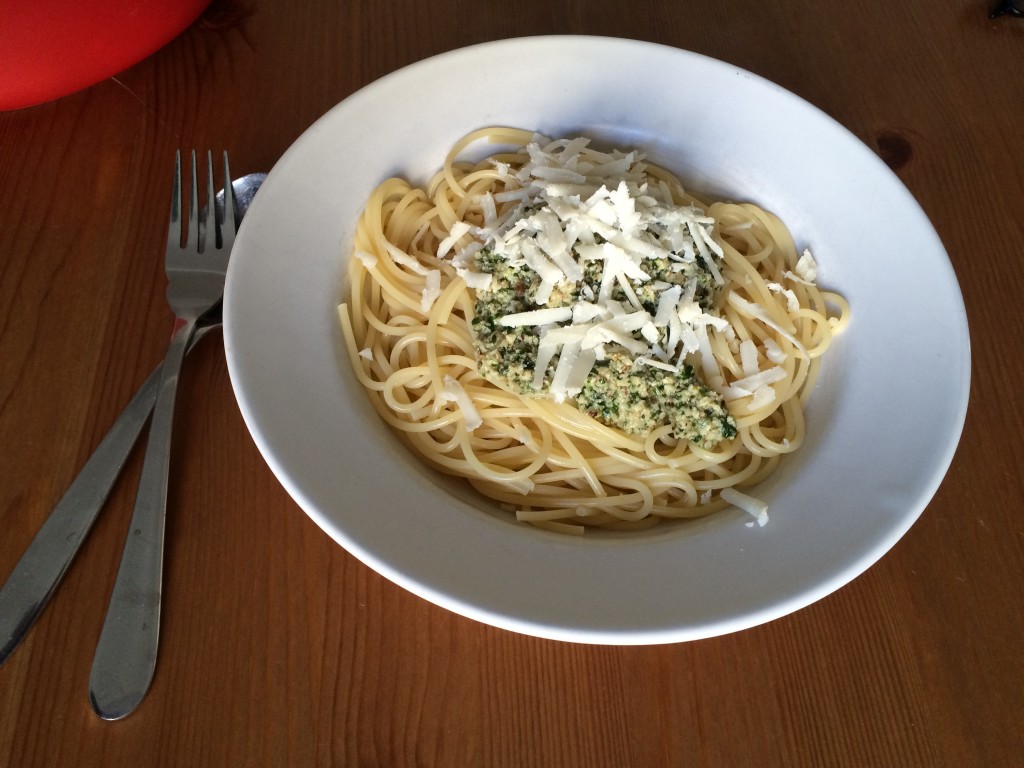
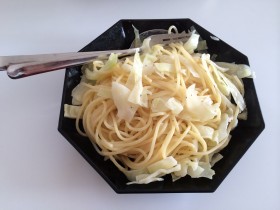
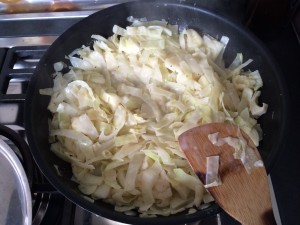 Put a big pot with water on the stove and bring to a boil.
Put a big pot with water on the stove and bring to a boil.